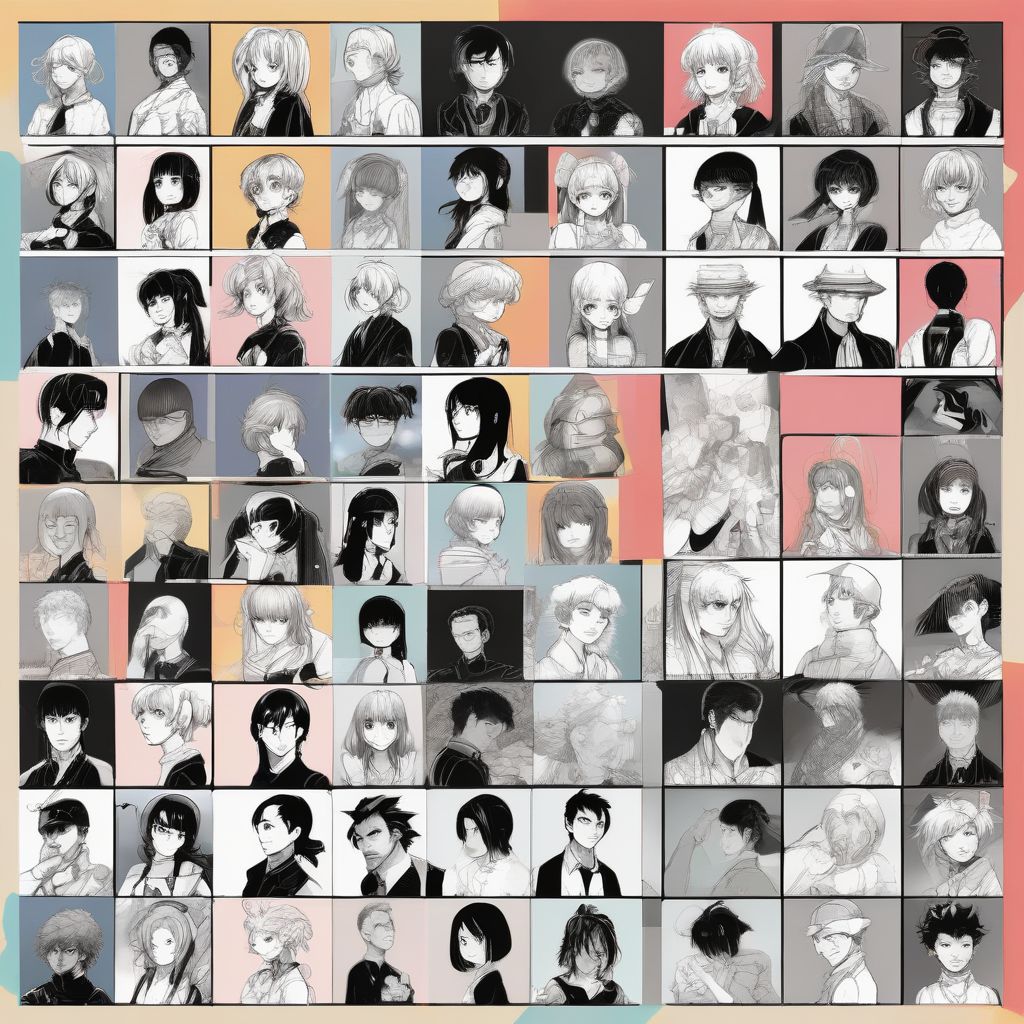Have you ever started reading a manga just because the cover art caught your eye? That’s the power of manga art styles! From the delicate strokes of shojo to the gritty lines of seinen, each style contributes to the unique storytelling magic of manga.
But with so many different art styles out there, it can be overwhelming to fully appreciate the nuances that each one brings to the table. Don’t worry, this guide is here to help you deepen your understanding and appreciation for the diverse world of manga art!
Understanding the Basics: What Makes Manga Art Styles Unique?
Before we dive into specific styles, let’s explore some key elements that contribute to the distinctive look of manga:
1. Character Design: Eyes that Speak Volumes
Manga characters are instantly recognizable. Their large, expressive eyes, often with intricate details and highlights, convey a wide range of emotions, from joy and sorrow to determination and mischief. Pay attention to how different artists use eye shape, size, and pupil details to reflect a character’s personality and emotional state.
2. Paneling and Flow: Guiding Your Gaze
Manga artists are masters of visual storytelling, using panel layouts, sizes, and shapes to control pacing and create dramatic impact. Notice how action sequences might use dynamic, angled panels, while quiet moments might feature larger panels with more detailed backgrounds.
3. Screentone and Effects: Adding Texture and Depth
Screentone, those sheets of patterned adhesive film, were once a staple in manga production, adding texture, shading, and special effects. While digital techniques are now widely used, many artists still incorporate screentone effects to create a classic look and feel.
 Manga Art Styles Comparison
Manga Art Styles Comparison
Exploring Popular Manga Art Styles
Now, let’s journey through some of the most popular manga art styles:
1. Shojo: Where Dreams and Romance Bloom
Shojo manga, targeting a young female audience, is known for its delicate linework, sparkling eyes, flowing hair, and emphasis on romance, friendship, and emotional drama.
Key Features:
- Large, expressive eyes: Often adorned with sparkles and intricate details to convey innocence, wonder, and strong emotions.
- Flowing hair and feminine clothing: Emphasizing grace and beauty.
- Soft color palettes: Using pastel colors or vibrant hues to create a dreamy or romantic atmosphere.
Notable Artists:
- Naoko Takeuchi (Sailor Moon)
- Arina Tanemura (Full Moon o Sagashite)
- Bisco Hatori (Ouran High School Host Club)
2. Shonen: Action, Adventure, and Unbreakable Bonds
Shonen manga, aimed at young boys, is all about action-packed adventures, intense battles, and themes of friendship, rivalry, and self-improvement.
Key Features:
- Dynamic and exaggerated characters: Featuring muscular builds, spiky hair, and determined expressions.
- Action lines and speed effects: Conveying movement and impact during fight scenes.
- Detailed backgrounds and dynamic paneling: Creating immersive and exciting action sequences.
Notable Artists:
- Akira Toriyama (Dragon Ball)
- Eiichiro Oda (One Piece)
- Masashi Kishimoto (Naruto)
3. Seinen: Mature Themes and Complex Narratives
Seinen manga targets an older male audience, exploring more mature themes, complex narratives, and often featuring darker, more realistic storylines.
Key Features:
- Realistic art styles: With detailed backgrounds and characters that look closer to real life.
- Subtle character expressions: Conveying emotions through nuanced facial expressions and body language.
- Focus on atmosphere and setting: Using detailed environments to create a specific mood or tone.
Notable Artists:
- Kentaro Miura (Berserk)
- Takehiko Inoue (Vagabond)
- Tsutomu Nihei (Blame!)
4. Josei: Navigating the Realities of Adulthood
Josei manga is geared towards older female readers, focusing on the realities of adulthood, relationships, careers, and personal growth.
Key Features:
- Mature and realistic characters: Often dealing with everyday struggles and complex emotions.
- Emphasis on dialogue and character interactions: Exploring relationships and personal journeys in depth.
- Varied art styles: From detailed and realistic to more stylized approaches.
Notable Artists:
- Ai Yazawa (Nana)
- Akiko Higashimura (Princess Jellyfish)
- Moyoco Anno (Hataraki Man)
Going Beyond the Surface: Tips for Deeper Appreciation
- Pay attention to linework: Notice the thickness, variation, and flow of the lines. Do they create a sense of movement, delicacy, or strength?
- Consider the use of color (or lack thereof): How do colors (or the absence of color) contribute to the mood, atmosphere, and character development?
- Reflect on the genre and target audience: How does the art style support the story’s themes and appeal to its intended readership?
- Explore different artists within a genre: You’ll discover that even within a single genre, artists bring their own unique styles and interpretations.
- Don’t be afraid to step outside your comfort zone: You might be surprised at the art styles you end up enjoying!
Conclusion: Embark on Your Own Artistic Adventure
Appreciating different manga art styles is a journey of discovery. It’s about opening your mind to new ways of visual storytelling, recognizing the artistry behind each stroke, and understanding how the art enhances your reading experience. So, dive into the world of manga, explore different styles, and let your eyes guide you to new favorites.
What are some of your favorite manga art styles and why? Share your thoughts in the comments below!
[amazon bestseller=”manga”]
